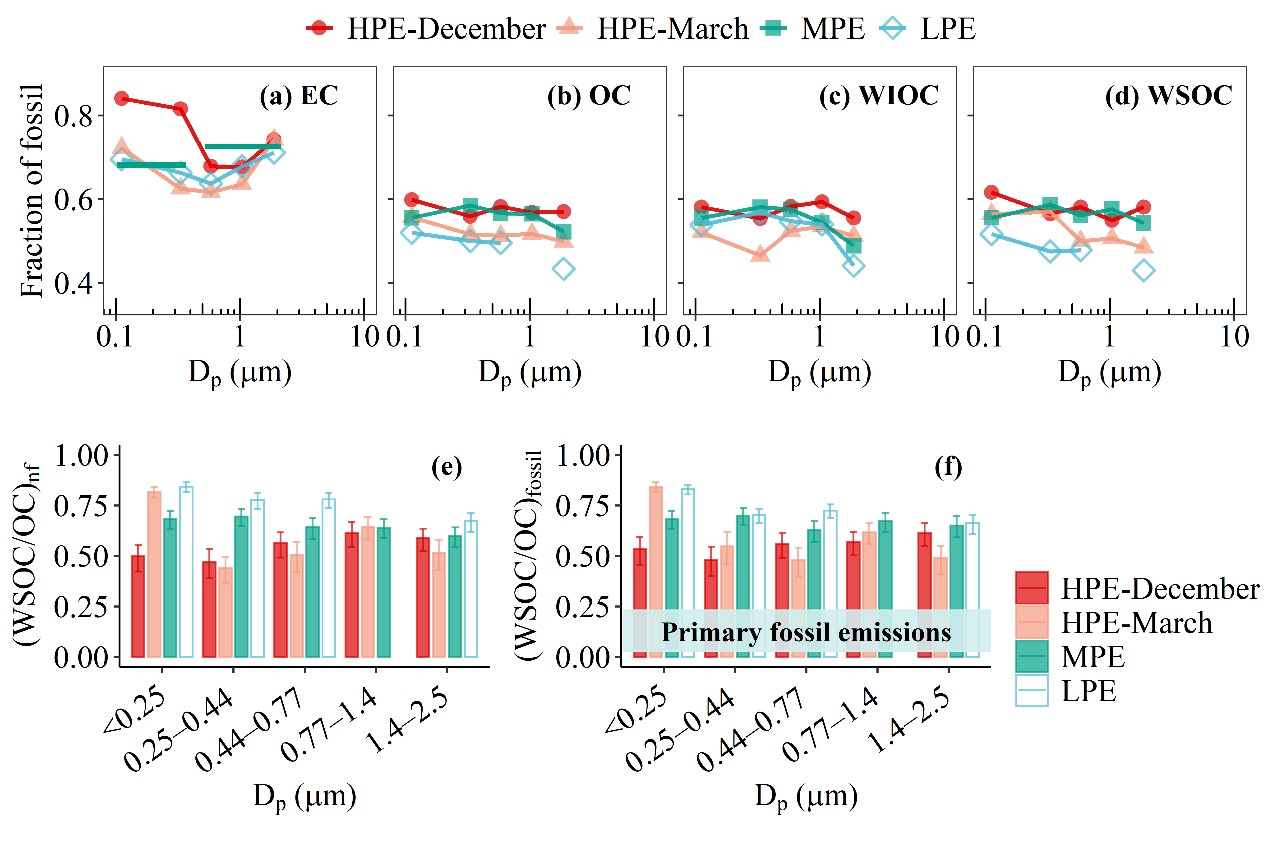Ni, H., Huang, R.-J., Yao, P., Cosijn, M. M., Kairys, N., Zhong, H., and Dusek, U.: Organic aerosol formation and aging processes in Beijing constrained by size-resolved measurements of radiocarbon and stable isotopic 13C, Environment International, 158, 106890, 2022.
Sources and formation mechanisms of organic aerosol (OA) and consequently its impact on air quality, climate and human health are not well constrained, due to the large number of organic compounds that comprise OA. In recent years, dual-carbon isotopes characterization (i.e., radiocarbon 14C and the stable carbon isotope 13C) has become increasingly important for quantitatively constraining sources as well as for a better understanding the formation processes of OA. It has so far mostly been applied to PM2.5 (all particles smaller than 2.5 µm). However, since OA sources, processes, life-time and consequently source regions differ with particle size, much more knowledge can be gained by analysing different aerosol size fractions. To our knowledge, this study represents the first dual-carbon isotopic analysis of size-resolved aerosols in China. We demonstrate the dual-carbon isotopic analysis of size-resolved aerosols to be a promising tool to elucidate the sources, atmospheric transformation and local vs. regional transport of OA in Beijing and therefore one of the crucial factors driving PM2.5 pollution in a highly polluted environment.
We found large secondary OA formation from fossil sources in wintertime Beijing, especially during high PM2.5 pollution events. Aqueous production of both fossil and non-fossil OA took place at high relative humidity during high pollution events. In contrast, during low pollution events, regional contribution and aging played an important role to the formation of OA, leading to less volatile, aged OA with strongly enriched 13C signature.
This study is published in Environment International:
https://doi.org/10.1016/j.envint.2021.106890

Fig 1. Fraction of fossil carbon in size-resolved (a) EC, (b) OC, (c) WIOC and (d) WSOC as well as size-resolved ratios of (c) (WSOC/OC)nf and (d) (WSOC/OC)fossil for high, moderate and low pollution events (HPE, MPE and LPE, respectively) during December 2017–March 2018 in urban Beijing.

